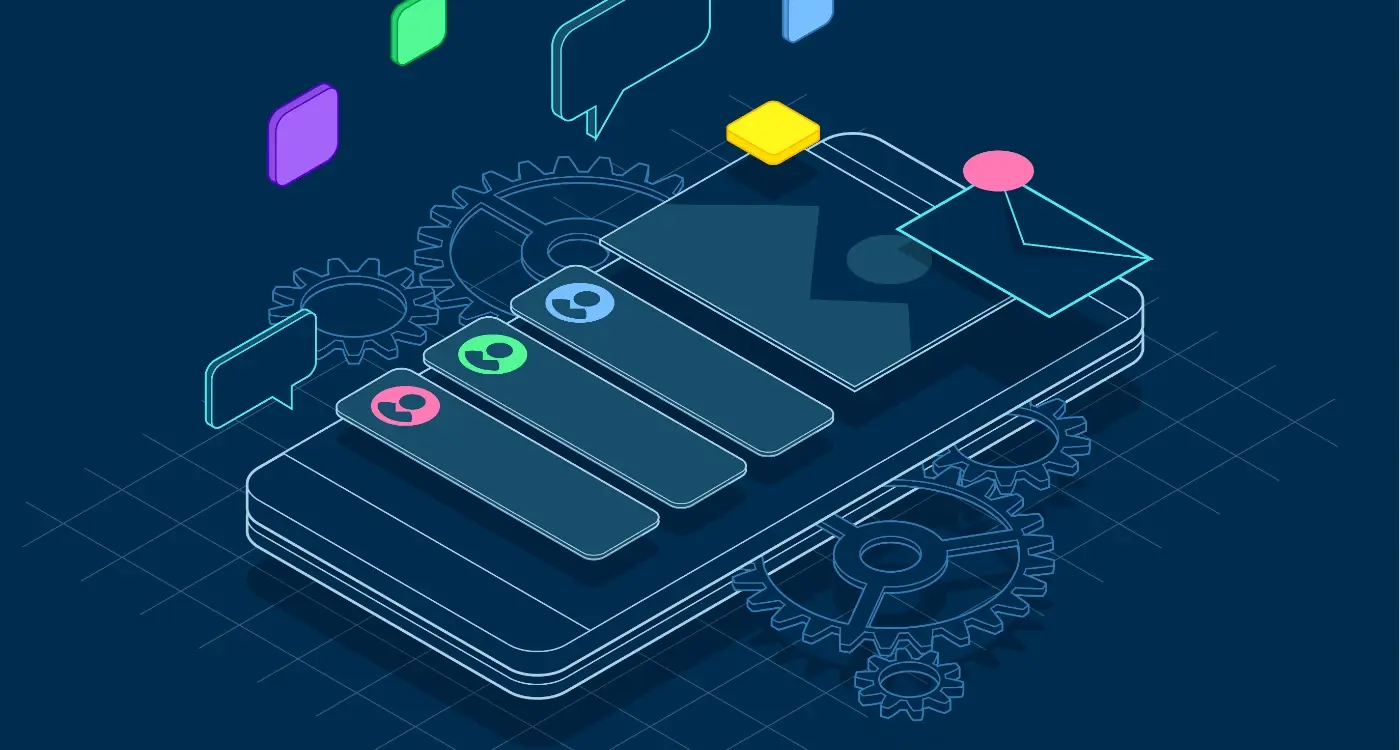Can I Get An App Built For Under £15,000?
So, can you really get a proper mobile app built for under £15,000? The short answer is yes—but there's a lot more to unpack here. Most people asking this question have done a bit of research online, seen quotes ranging from £5,000 to £500,000, and found themselves completely confused about what's realistic for their budget.
The truth is, £15,000 can absolutely get you a functional, well-designed app that serves your users and achieves your business goals. But—and this is a big but—it won't get you the next Instagram or a feature-packed enterprise solution. What it will get you is something much more valuable: a smart, focused app that does one thing really well.
The best apps aren't the ones with the most features; they're the ones that solve a real problem without making users think too hard about how to use them
Over the years, I've helped dozens of clients build successful apps within tight budgets by making strategic choices about what to include, what to leave out, and how to approach development. The key isn't cutting corners—it's being clever about where you spend your money and understanding that every pound counts when you're working with budget constraints.
What Makes An App Cost £15,000 Or Less
Right, let's get straight to the point—apps that cost £15,000 or less aren't magic tricks or corner-cutting disasters. They're simply apps built with clear boundaries and realistic expectations. The magic number here isn't about quality; it's about scope.
Most budget-friendly apps share a few common traits. They solve one specific problem really well rather than trying to be everything to everyone. Think of apps that do booking, simple e-commerce, basic social features, or content delivery—nothing too fancy, but they work brilliantly for what they're designed to do.
Simple Features, Smart Choices
The apps that fit this budget typically have around 5-8 core features maximum. We're talking login systems, basic user profiles, simple content management, maybe some push notifications. No complex integrations with multiple third-party services, no advanced AI features, and definitely no custom animations that take weeks to perfect.
Platform Strategy Matters
Most £15,000 apps start with one platform—either iOS or Android, not both. Building for both platforms simultaneously can easily double your development costs, so picking your primary audience and starting there makes perfect financial sense. You can always expand later once the app proves successful and generates some revenue to fund that expansion.
Understanding The Different Types Of Budget-Friendly Apps
Not all apps are created equal—and that's brilliant news for your budget. When we talk about cheap app development, we're really looking at three main categories that can keep costs under control without sacrificing quality.
Utility Apps That Do One Thing Well
These are your workhorses; simple, focused apps that solve a specific problem. Think calculators, unit converters, or basic to-do lists. They don't need fancy features or complex databases, which makes them perfect for affordable app development. The beauty is in their simplicity—users know exactly what they're getting.
Content-Based Apps
News apps, recipe collections, or fitness guides fall into this category. They're essentially digital magazines or books with some interactive elements. The development costs stay low because you're mainly displaying information rather than processing complex user interactions. These apps work brilliantly as low cost MVP development projects.
Then there are basic social or community apps—nothing too ambitious, mind you. Simple forums, local community boards, or hobby-focused platforms where people can share photos and comments. They require more backend work than utility apps but still fall within budget-friendly territory if you keep the features lean.
Start with apps that don't need real-time features like live chat or GPS tracking—these technical requirements can quickly push costs beyond your £15,000 budget.
The MVP Approach—Building Smart Not Cheap
MVP stands for Minimum Viable Product and it's probably the smartest way to get your app built within a £15,000 budget. I see too many people confusing this with building something cheap or basic—that's not what MVP means at all. It's about being strategic with what you build first.
Think of your dream app as having fifty different features. An MVP approach means picking the five most important ones that solve your users' main problem. You're not cutting corners; you're being clever about priorities. The beauty of this approach is that you can launch sooner, test with real users, and then add more features based on what people actually want—not what you think they want.
What Goes Into Your First Version
The money you save by starting with an MVP can be reinvested into improvements once you know what users actually need. It's building smart, not building everything at once and hoping for the best.
Design Choices That Keep Costs Down
When it comes to budget app development, your design decisions can make or break your £15,000 budget. I've seen clients blow their entire budget on fancy animations and custom graphics that users barely notice—it's painful to watch! The secret isn't about making your app look cheap; it's about being smart with where you spend your design budget.
Start With System Components
Both iOS and Android come with loads of pre-built design elements that look professional and work brilliantly. Using standard buttons, navigation bars, and form elements saves hours of custom design work. Your users already know how these work, which means less confusion and fewer support headaches later.
The best budget apps look native because they use what the platform already provides
Keep Visual Elements Simple
Custom icons and illustrations can cost hundreds of pounds each when you add up design time and revisions. Stock icons from places like Feather Icons or SF Symbols look clean and professional—most users can't tell the difference. Save your custom design budget for the one or two elements that really matter to your brand.
Simple layouts with plenty of white space look modern and cost less to implement. Complex layouts mean more development time debugging different screen sizes and devices. Sometimes the most affordable choice is also the most elegant one.
Development Shortcuts That Actually Work
Right, let's talk about the shortcuts that won't come back to bite you later. I'm not talking about cutting corners that'll make your app fall apart—I mean proper time-saving techniques that experienced developers use every day.
Cross-Platform Development
Building for both iOS and Android separately used to be the only way, but tools like React Native and Flutter have changed the game completely. You write your code once and it works on both platforms. Now, purists will tell you native is always better, and they're not wrong, but for most apps the difference is negligible. Your users won't notice, but your budget definitely will.
Ready-Made Solutions
Why build a payment system from scratch when Stripe exists? User authentication, push notifications, analytics—there are brilliant third-party services for almost everything. Yes, you'll pay monthly fees, but compare that to months of development time and it's a no-brainer.
Template-based UI components save masses of time too. Instead of designing every button and form field from nothing, developers can use proven component libraries. The end result looks professional and works reliably.
Hidden Costs Most People Miss
Right, let's talk about the sneaky expenses that catch everyone off guard. I've seen so many clients get a quote for £12,000 and think they're sorted—only to discover their final bill creeping towards £20,000. It's not because agencies are trying to rip you off; it's because there are genuine costs that nobody thinks about upfront.
The biggest one? App store fees and certificates. Apple charges £79 per year for their developer programme, Google Play is £20 one-off. Then there's SSL certificates, push notification services, and analytics tools. These might seem small but they add up fast.
The Testing Trap
Here's where budget app development gets tricky—testing on real devices. Your app might work perfectly on the developer's computer but crash on older iPhones or budget Android phones. Proper device testing can add £1,000-£2,000 to your project, but skipping it is asking for trouble.
Post-Launch Reality
Then there's the stuff that happens after launch. Bug fixes in the first month are pretty much guaranteed. App store rejections happen more often than you'd think—each resubmission takes time and money. Plus you'll want to update your app within six months when iOS or Android releases new versions.
Always budget an extra 20-30% on top of your quoted price for these hidden costs—it'll save you stress later.
Conclusion
So there you have it—building an app for under £15,000 isn't just possible, it's actually quite common when you approach it the right way. I've seen countless clients achieve their goals within this budget by being smart about their choices rather than cheap about their standards.
The key is understanding what you really need versus what you think you want. That MVP approach we talked about? It's your best friend here. Start with the core features that solve your users' main problem, keep the design clean but not flashy, and use development shortcuts that make sense—not ones that'll bite you later.
Don't forget about those hidden costs we covered either. They can turn your £15,000 budget into a £20,000 surprise if you're not careful. App store fees, third-party services, and ongoing maintenance aren't optional extras—they're part of the package.
The truth is, most successful apps started simple and grew from there. Your first version doesn't need to change the world; it just needs to work well for the people who'll use it. Get that right within your budget, and you'll have a solid foundation to build upon as your app grows and your revenue increases.
Share this
Subscribe To Our Learning Centre
You May Also Like
These Related Guides

How Much Does Psychology Driven App Development Cost?

What Makes Some Apps Cost 10x More to Build?



